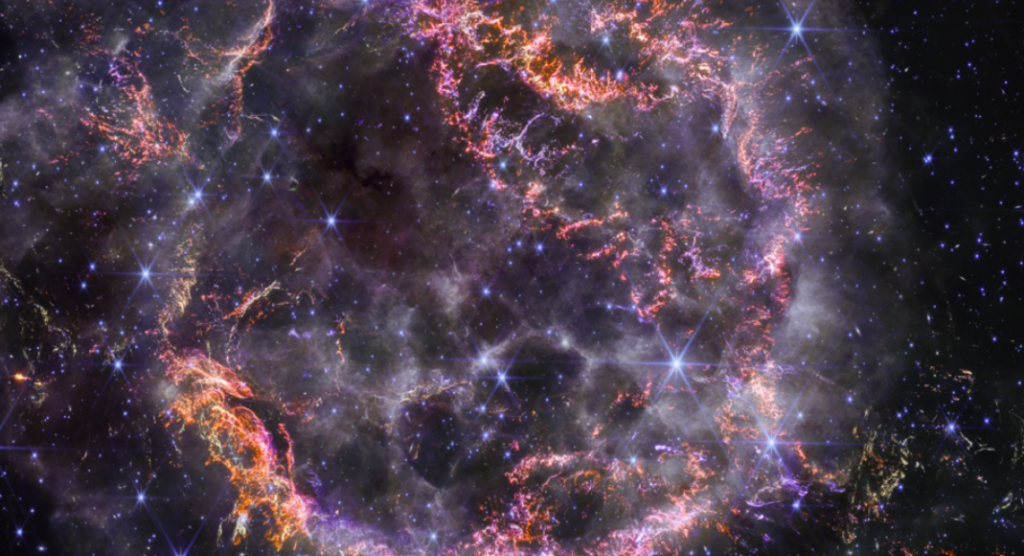

Having the finest optics of any space observatory, the James Webb Space Telescope can view objects that are darker and farther away. Its infrared eyes are also perfect for gaining a fresh perspective on well-studied items. When astronomers directed Webb toward the supernova remnant Cassiopeia A (Cas A), they discovered previously unseen characteristics.
The most potent telescopes in the world, including as Hubble, Spitzer Space Telescope, and Chandra X-Ray Observatory, have all taken pictures of Cas A. The two primary instruments of the telescope were used to record the Webb observations, which were made public as part of the first-ever White House Advent Calendar. When MIRI and NIRCam are combined, the inner shell of the remnant’s complexity is revealed.
With a greater wavelength than the visible spectrum, infrared light is used by Webb to study the universe. Webb is able to look past dense interstellar clouds because infrared light travels through gas and dust clouds more easily than shorter visible wavelengths. The NIRCam (Near-Infrared Camera) used by Webb produced the image above. The NIRCam image and the MIRI (Mid-Infrared Instrument) image are shown below. This supernova remnant can be seen in different ways depending on the wavelength.
Purdue University’s Danny Milisavljevic led the observations, noting that the star’s intricate structure demonstrates how it “shattered” when it perished. Milisavljevic describes the remains as glass shards.

The inner shell of Cas A is visible in the NIRCam image as a brilliant ring of orange and pink. These argon, oxygen, and sulfur swirls may someday serve as the foundation for a different solar system. The diameter of the entire structure is ten light-years. About 10 billion miles across, or 100 times the distance between Earth and the sun, make up the tiniest features that Webb has been able to discern. Synchrotron radiation, which is created when charged particles accelerate around a magnetic field, is responsible for the lighter-colored inner haze. The discovery of “Baby Cas A” with NIRCam, a striated blob in the bottom right corner of the frame, also astounded the scientists. This is a “light echo” produced by the supernova’s light warming far-off dust clouds. This cloud is thought to be 170 light-years behind Cas A.
This “shattered” cloud is shown in distinct regions by the MIRI perspective. Where the outer shell and interstellar medium collide is indicated by the brilliant ring surrounding Cas A. This region appears as a diffuse, smokey cloud in NIRCam because this gas is too chilly to ignite. However, it is clearly visible in the mid-infrared. In the center, there’s a green splash that astronomers aren’t quite sure how to explain. There is some ionized gas visible in the NIRCam image, but the majority of this element is hidden. Astronomers surmise that this could be supernova debris interacting with gas the star produced prior to its explosion when combined with the MIRI data.